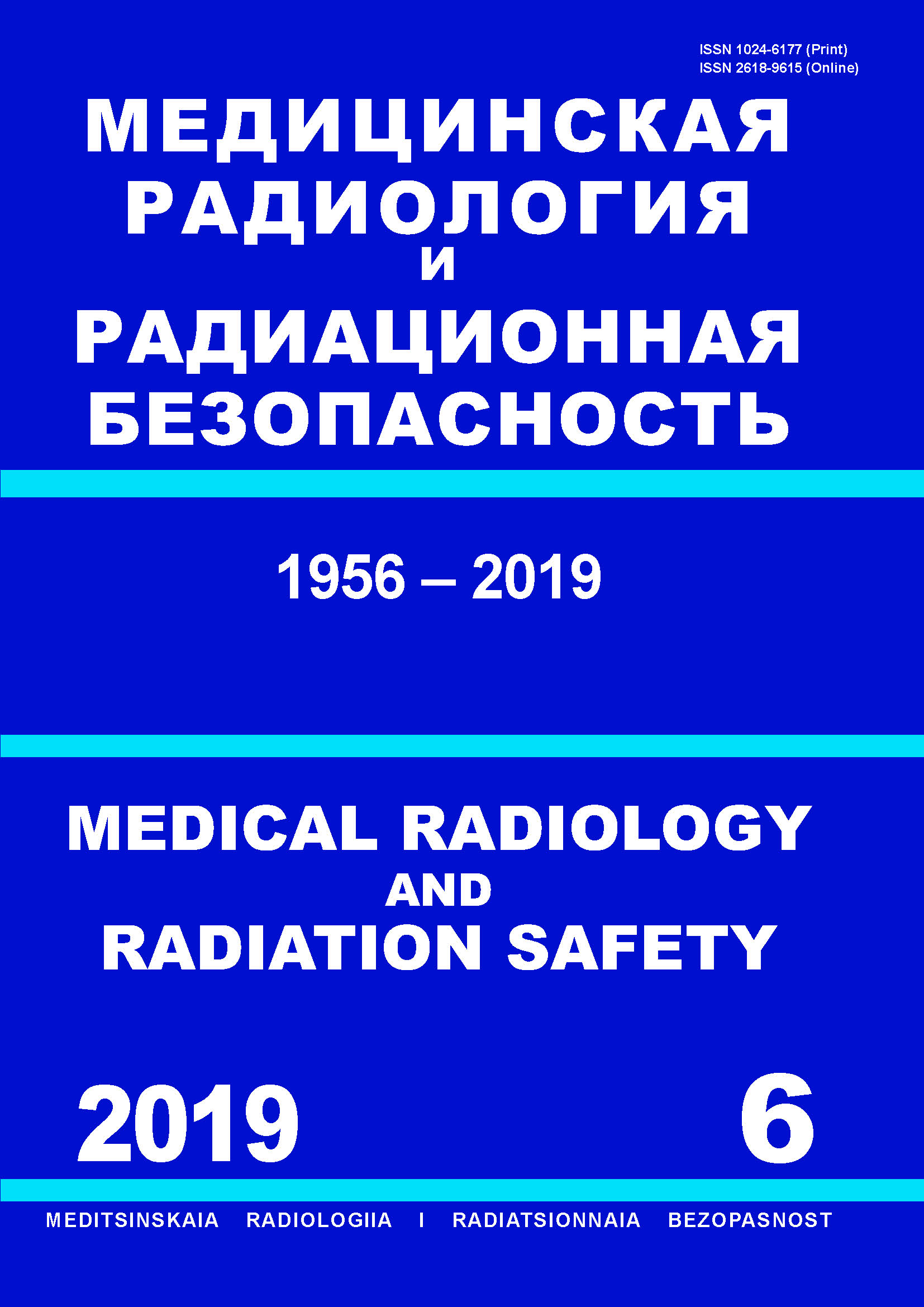Russian Federation
Russian Federation
CSCSTI 76.03
CSCSTI 76.33
Russian Classification of Professions by Education 14.04.02
Russian Classification of Professions by Education 31.06.2001
Russian Classification of Professions by Education 31.08.08
Russian Classification of Professions by Education 32.08.12
Russian Library and Bibliographic Classification 51
Russian Library and Bibliographic Classification 534
Russian Trade and Bibliographic Classification 5708
Russian Trade and Bibliographic Classification 5712
Russian Trade and Bibliographic Classification 5734
Russian Trade and Bibliographic Classification 6212
The general approaches and criteria for substantiating the complex system of radiation protection (RP) of a human operator in the conditions of work in high-dose fields of ionizing radiation are considered. When planning work in such conditions, it is advisable to consider a set of measures of an organizational, technical and medical nature. Each activity has its measures own limits to reduce the dose load on the human operator or the development of adverse effects of radiation, and in some cases only a combination of them can give a certain protective effect, allowing to carry out the necessary activities in such conditions. If an operator works in mobile technical facilities (for example, a bulldozer, a caterpillar all-terrain vehicle, a helicopter, etc.) an important place is occupied by the issue of strengthening the technical component of the RP, primarily by engineering the design of additional shield elements. The biomedical rationale for the optimality of such protection is givenensuring maximum protection of vital organs, in the first place, red bone marrow, a significant volume of which is concentrated in the bones in the lumbar vertebrae, sacrum and pelvis. Several examples of the performance of professional activity of operator in the conditions of high-dose ionizing radiation fields and an expert evaluation of the limiting capabilities of the technical and medical component of the integrated RP are considered.
ioionizing radiation, high-doses, radiation protection, radiobiological aspects
1. ICRP Publication 103. - Elsevier Ltd. 2007.
2. Radiation Safety Standards (NRB - 99/2009), SanPIN 2.6.1.2523-09, 72 p. (In Russian).
3. Saksonov PP. Anti-radiation Protection (Biological, Pharmaco-Chemical, Physical). Fundamentals of Space Biology and Medicine (Joint USSA-USA Edition). - Moscow, Nauka. 1975;3:317-48. (In Russian).
4. Bond VP, Fliedner TM, Archanbeau JO. Mammalian Radiation Lethality: a Disturbance in Cellular Kinetics - N.Y.: Academic Press, 1965.
5. Gruzdev GP, Ivanova TA, Gordeeva AA, Scherbova EN. On the Functional Mosaic of the Bone Marrow (“Pulsating Clone”). Hematol Probl. 1980;5:36-9. (In Russian).
6. Soloviev VYu, Baranov AE, Konchalovsky MV, Chistopolsky AS. Prediction of Postradiation Dynamics of Neutrophil Concentration in Human Peripheral Blood under Nonuniform Irradiation. Medical Radiology and Radiation Safety. 1997;42(3):17-23. (In Russian).
7. Soloviev VYu, Baranov AE, Khamidulin TM, Zinovieva NV. Human Acute Radiation Injuries Database. Report 3. Forecasting Specifics of Postradiation Peripheral Blood Granulocyte Concentration Dynamics in Bone Marrow Syndrome, Complicated By Radiation Burns in Case of Non-uniform Body Irradiation. Medical Radiology and Radiation Safety. 2013;58(6):30-5. (In Russian).
8. Baranov AE, Konchalovski MV, Soloviev WJu, Guskova AK. Use of Blood Cell Count Changes after Radiation Exposure in Dose Assessment and Evaluation of Bone Marrow Function. In: The Medical Basis for Radiation Accident Preparedness II. Clinical Experience and Follow-up since 1979. Eds. R.C. Ricks, S.A. Fry. P. 427-43.
9. ICRP Publication 23: Reference Man: Anatomical, Physiological and Metabolic Characteristics. - Pergamon Press, Oxford, 1975. 480 p.
10. ICRP Publication 110: Adult Reference Computational Phantoms. Ann. ICRP, 2009. 137 p.
11. Soloviev VYu, Khamidulin TM. Voxel Phantom Technology in Accidental Dosimetry: Perspectives. Medical Radiology and Radiation Safety. 2014;59(3):52-8. (In Russian).
12. Soloviev VYu, Kotchetkov OA, Tarasova EO, Khamidulin TM. Using Voxel Phantom Technology for Accidental Dosimetry: Comparison of Calculated and Experimental Data. ANRI. 2017;88(1):32-40. (In Russian).
13. Grebenyuk AN, Legeza VI., Milyaev AV, Starkov AV. Modern strategy of health protection and medical measures in radiation accidents. Radiation Hygiene. 2018;11(4):80-8. (In Russian).
14. Grebenyuk AN, Gladkikh VD. Modern Condition and Prospects for Development of Medicines for Prevention and Early Treatment of Radiation Injures. Radiation Biology. Radioecology. 2019 Jan-Feb; 59(2):132-49. (In Russian).
15. Il’yin LA, Rudny NM, Suvorov NN. Indralin, a Radioprotector of Emergency Action. Anti-radiation Properties, Pharmacology, Mechanism of Action, Clinic. - Moscow, 1994. 436 p. (In Russian).
16. Khrisanfov SA. Experimental Substantiation of the Compatibility of Various Anti-Radiation Drugs. Diss. PhD Med. - Moscow, 1987. 118 p. (In Russian).
17. Martirosov KS, Zorin VV, Grigor’ev YuG, Andrianova IE. An Experimental Study of the Role of a Blockade of Serotonin 5-HT3 Receptors and Dopamine D2 Receptors in the Mechanism of the Occurrence of Early Radiation Vomiting in Monkeys. Radiation Biology Radioecology. 2000. May-June; 40(3):277-80. (In Russian).





